This culinary journey through Chile from north to south, takes you from one extreme to the next over the course of a delicious meal made up of traditional Chilean dishes. Many of these meals are found throughout the length of Chile and can be found at most Chilean restaurants. But they originate where these ingredients have a longer history, like quinoa in the north, and lamb in the south. Follow along for a taste of Chile.
Rica Rica Pisco Sour
Starting in the Atacama Desert, the driest desert in the world, the Atacama, you might not expect there to be much to begin a meal. However, some of the country’s most iconic flavors come from the desert, and one of them, rica rica melds particularly well with the Pisco Sour, which is Chile’s unofficial national aperitif. Pisco is a clear brandy distilled from grapes, and sours are generally made with the juice of a local lemon and sugar. In the north, some rica rica is often added, adding an herbal touch some people think it tastes a bit like sage.
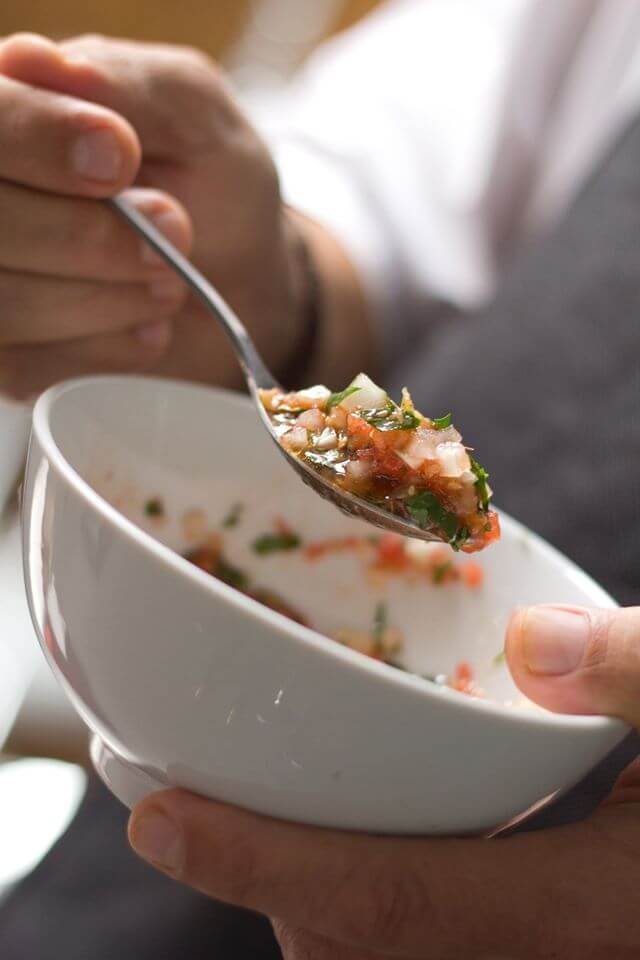
Pan con Pebre
As you move through your meal, the first thing to come to the table nearly the length of Chile, though with regional variations, is pan con pebre. The bread, or pan, may be pan amasado, a hearty country bread typical of the south, hallullah, a dense, round bread with holes poked in the uppermost layer, or marraqueta, which is Chile’s version of French bread, which comes in groups of two or four rolls. Sopaipillas, or fried disks of squash-enriched dough may also appear in the bread basket, especially from Talca through the south.
Pebre is a fresh chopped sauce similar to a salsa fresca, which usually is made up mainly of tomatoes, onions, cilantro and a drop of olive oil, but may also have yellow chiles in it, or at the coast, bits of seaweed called ulte. Either way, use a fork to serve yourself some out of the small bowl it’s served in, directly onto your bread.
Machas a La Parmesana
In the north, many larger cities and towns, like Antofagasta, Arica and Iquique are set facing the ocean, which means that the popular machas a la parmesana served here are very fresh. Machas are a kind of clam, similar to a razor clam, served on the half shell and baked with cheese, and sometimes a drop of wine. They’re sweet and a touch chewy, and usually come in plates of a dozen, which makes them a great starter for when you’re sharing a meal. These are found throughout much of Chile.
Caldillo de Congrio
Or maybe you’re in the mood for soup. This brothy soup, one of whose main ingredients is the conger eel (a type of fish) was perhaps made most famous by poet Laureate Pablo Neruda’s ode to it. But with bits of chopped cilantro and rounded out with the heartier seafood flavors of clams and oysters, there’s no doubt that this traditional Chilean food from the zona central should be one of your must-tastes on a trip to Chile.
Cazuela
Cazuela is another soup option if you’re in the mood for chicken or beef. You should be warned that nearly everyone in Chile believes that their mother makes the best cazuela, so if you think you’ve tasted the best one, expect a debate. But what is it? Cazuela comes in a large bowl with a cut of meat or chicken, as well as some large chunks of potatoes, half a corn cob and a large piece of squash. Some people cut all the hearty parts before beginning, and others eat the soup, scooping off pieces of the meat and vegetables as they go. Local variations include cazuela de cordero (lamb cazuela) as you get further south, to where sheep are also raised.
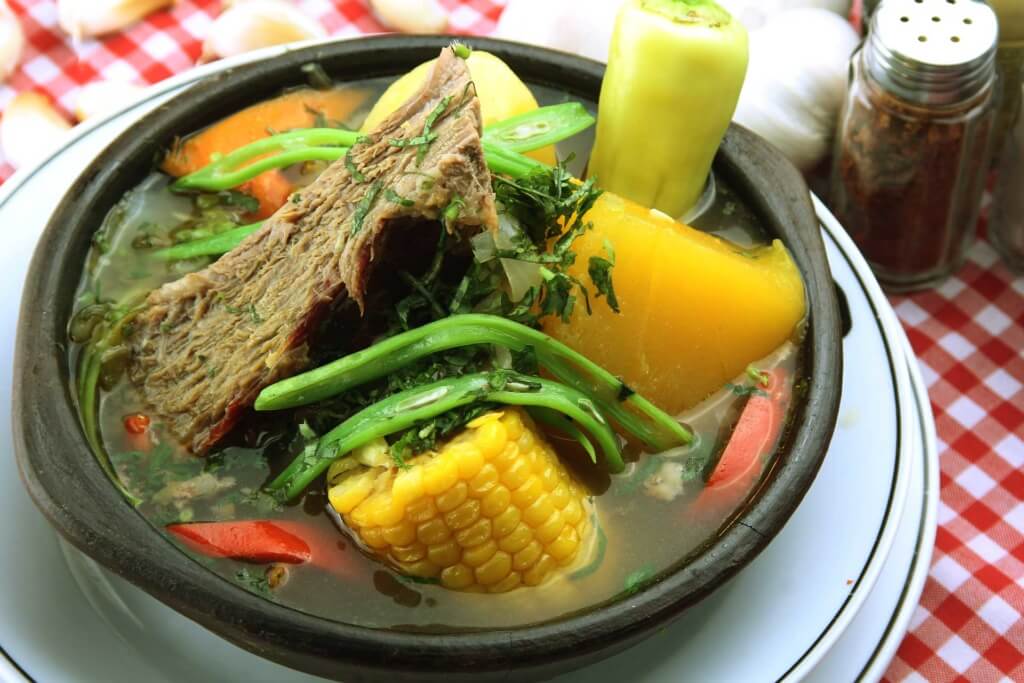
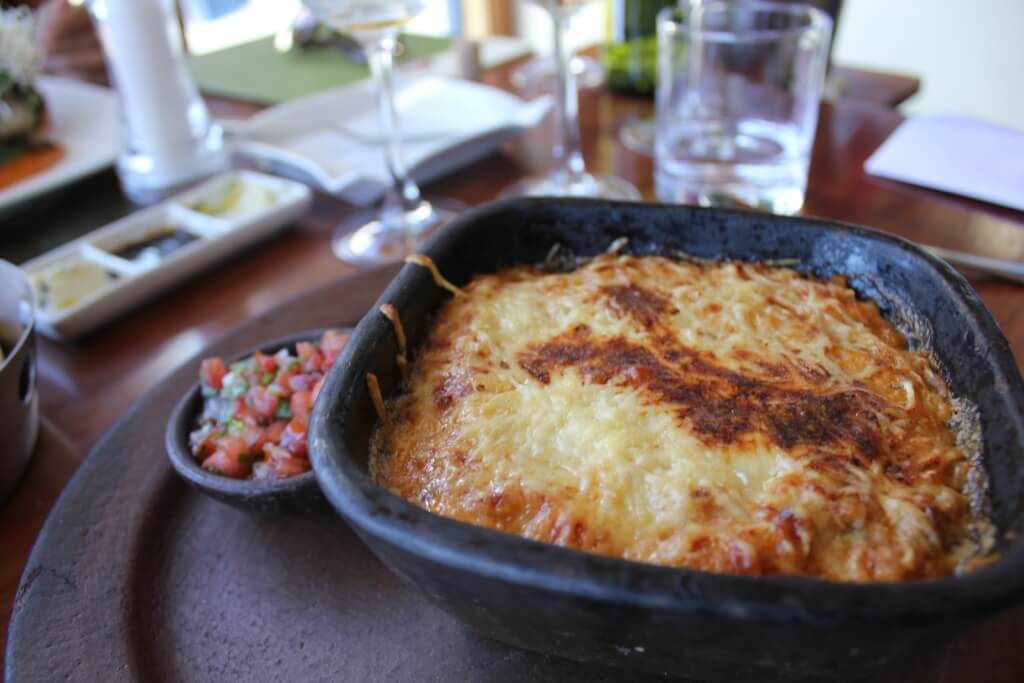
Pastel (or Chupe) de Jaiba
Cooler weather calls for an even heartier stew, so maybe you’ll choose a pastel de jaiba, a kind of bread-thickened bisque enriched with local crabmeat from the center and south of Chile. This dish is topped with cheese, and served bubbling in a greda, or earthenware bowl typical of the central zone as well, often from the town of Pomaire. The bowl goes in the oven, so heed the waiter’s warning that the bowl is caliente. Even further south, versions of this crop up with centolla, Chile’s massive, sweet-fleshed king crab.
Plateada con Quinoa
Also in the north, Chile’s millennial grain has long been a staple of the nortinos (people from the north), and quinoa is most often found in the north of Chile, or in upscale restaurants in Santiago. In the north it is often found served together with plateada, a cut of beef, though if you’re lucky, it may also come with alpaca or llama meat, which are also some of the typical dishes of the Atacama, where these animals are raised for meat.
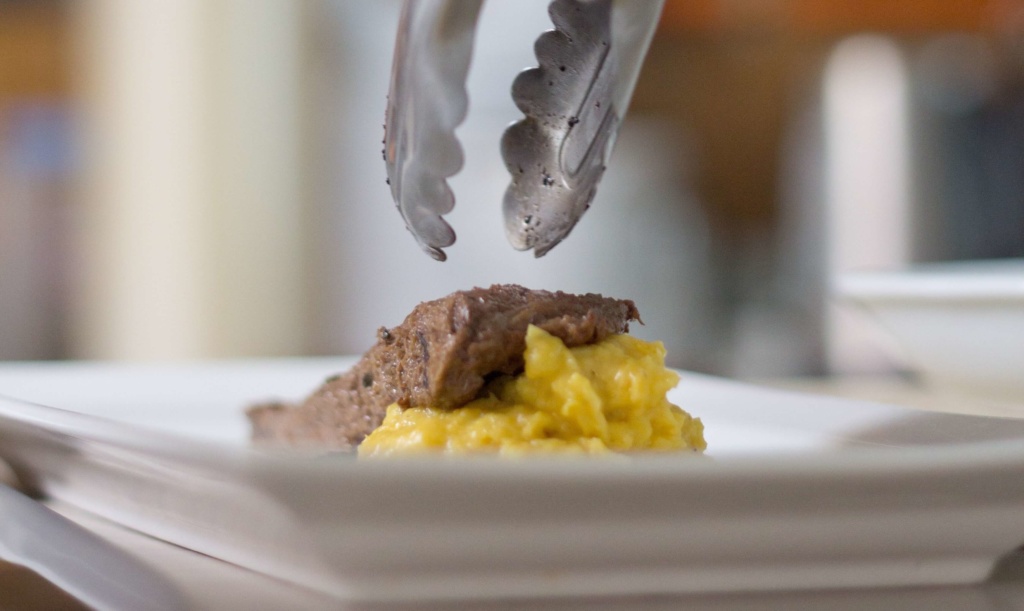
Empanada
Or maybe you had a hearty breakfast, or you’re not quite ready for a full lunch. In Chile, there’s nearly always an empanada close at hand. In the north, in towns like San Pedro de Atacama, you’d be likely to find one with llama or alpaca meat. On the coast, there are fried cheese empanadas with seafood like shrimp or scallops, or baked ones with seafood stew. Along the length of Chile are empanadas de pino, or meat empanadas with half a hard-boiled egg and an olive (from the north of Chile) tucked inside. And on the island of Chiloé and further south, you may be lucky enough to find pear or apple empanadas, which are hearty and sweet, a hand-held pie for the road (though most people will eat them sitting down).
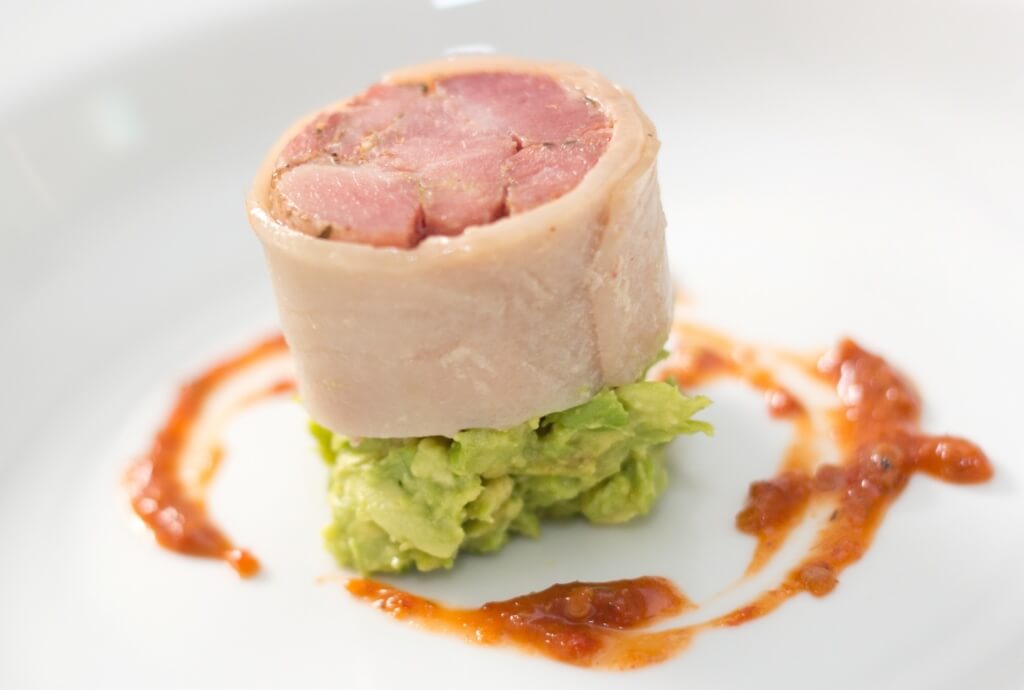 Arrollado de Huaso/Chancho
Arrollado de Huaso/Chancho
Even heartier fare is on hand as you move further south, where many people raise their own pigs. In the waste-not-want-not years in Chile’s past, people were very careful to use every part of the pig, which is how this rolled meat dish was born. It’s considered a country specialty of the south, and it is rolled and tied, and the outside is brushed with a spicy sauce. It is served in slices, often with puré picante (spicy mashed potatoes) as a side.
Postres
And if the north of Chile started us off well with our pre-meal cocktail, the south of Chile never disappoints with its varied desserts. In the southern part of the country, many homes are heated by wood-burning stoves in the central part of the house, and that same cozy culture gives rise to some of the best cheesecakes, kuchenes (fruit pies or crumbles) or slow-stirred manjar (dulce de leche) which sweetens everything from alfajores (sandwich cookies) to Chile’s own milhojas cake. Or if you want to harken back to the soft desserts of childhood, arroz con leche (rice pudding) or sémola (a cross between rice pudding and cream of wheat, made with coarse-ground wheat) are never far off.

